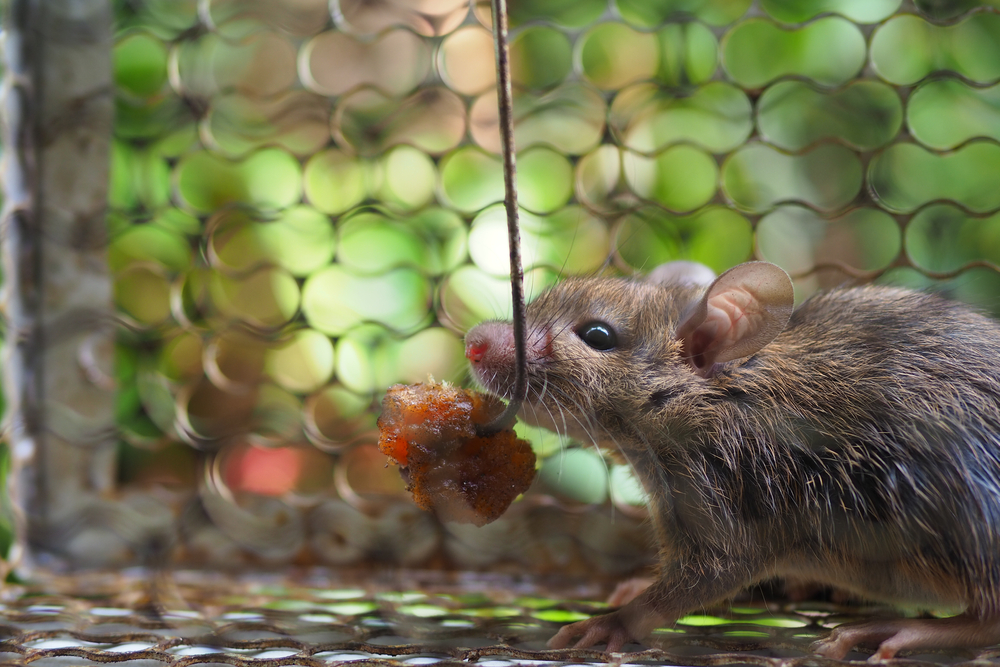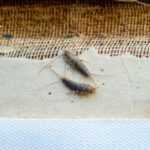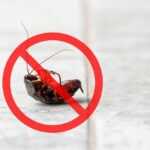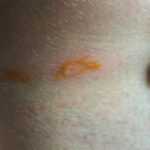The Best Mouse Trap Bait
Fed up with playing endless hide-and-seek with those crafty little invaders? It’s time to become the ultimate mouse-catching champion by choosing the best bait for mouse traps.
- Peanut Butter: Its powerful aroma and sticky texture make it nearly impossible for mice to snatch a bite without triggering the trap’s mechanism.
- Seasonal Smarts: When temperatures drop, mice crave sweet and savory snacks like sizzling bacon, creamy cheese, and sugary treats—perfect for luring them out of their nests.
- Placement Perfection: Strategically placing traps along mouse pathways while minimizing your scent creates irresistible mouse magnets.
- Trap Variety Matters: Using a mix of snap traps, glue traps, live traps, and electric traps can increase your chances of catching more mice effectively.
- Entry Point Monitoring: Identifying and baiting near common entry points helps in controlling the mouse population before they spread throughout your home.
- Understanding Mouse Behavior: Knowing that mice are nocturnal and cautious can help you set traps at the right times and places for maximum success.
Peanut Butter
Peanut butter isn’t just a kitchen staple—it’s the superstar bait in the world of mouse traps! Its nutty scent acts like a beacon, attracting mice out of hiding. The sticky texture is a trap’s best friend, making it tough for mice to eat without triggering the trap’s pull.
Just a tiny dab—about the size of a pea—is all you need to lure any house mouse into your trap. Affordable and easy to apply, peanut butter works wonders in snap traps, live traps, electric traps, glue traps, and even bucket traps. Facing a few mice or a full invasion? Peanut butter is your secret weapon.
Pro tip: Mix in a bit of hazelnut spread for an even more effective bait that female mice and males alike find irresistible!
Sweet Treats: Chocolate, Candy, and More
Got a sweet tooth? So do mice! They’re irresistibly drawn to chocolate, candy, and sugary cereals. The sweet aroma travels far, guiding mice straight into your traps.
Using tiny bits of chocolate or gum drops challenges mice just enough to trigger the trap’s mechanism when they work for their treat. But beware—keep these sweet baits out of reach from pets and children to avoid accidental ingestion.
If peanut butter isn’t pulling in the mice, sweet treats offer an excellent bait alternative to lure mice and solve your mouse problem swiftly.
Savory Baits: Bacon, Cheese, and Pet Food
Not into sweets? No problem! Mice also adore savory delights like crispy bacon, creamy soft cheese, hearty dog food, and juicy hot dogs. These fatty foods turn your traps into the hottest dining spot in the neighborhood for mice.
Warming bacon or cheese before baiting intensifies their scent, making it impossible for mice to resist. Use just a small piece to activate the trap’s trigger effectively in snap traps, live traps, glue traps, and bucket traps.
Bonus bait: Beef jerky’s strong smell and chewy texture lure even the wariest mice to their doom.
Nesting Materials
When winter chills set in, mice shift focus from food to nesting. Cozy materials like cotton balls, dental floss, shredded paper, and cheese cloth become highly attractive bait. Combine these nesting materials with a tiny dab of peanut butter or soft cheese for a powerful lure, especially when catching the most elusive mice during cold months.
Though nesting materials don’t always trigger the trap mechanism as effectively as food baits, they’re a clever addition to your extended mouse control arsenal.
DIY and Natural Baits
Looking for natural or homemade bait options? You can craft effective baits using kitchen staples and garden finds. Mix sunflower seeds with a touch of honey or syrup for a sticky, sweet bait. Pumpkin seeds and flaxseed blends also appeal to mice’s natural diet preferences.
Using natural ingredients can reduce chemical exposure in your home and provide an environmentally friendly way to catch mice.
Humane and Alternative Bait Options
Want a kinder approach? Humane bait options let you trap mice without harm. Homemade recipes and non-lethal commercial products make ethical mouse management possible.
DIY Bait Recipes
Get creative with budget-friendly ingredients like hemp, pumpkin, flax, sunflower seeds, marshmallows, and gum drops. Mixing sunflower seeds with marshmallows creates a sticky, sweet bait mice find hard to resist.
These homemade mixtures work well with glue traps, snap traps, live traps, and bucket traps, giving you full control over your mouse-catching tactics.
Commercial Baits
For convenience, commercial baits come ready-made with natural scents and flavors designed to attract even the most cautious rodents. Pre-made food blocks and scented gels stick easily to traps and remain effective for both small and large infestations.
Best Practices for Bait Placement
Choosing the right bait is just half the battle. How you put traps in place can make or break your mouse-catching success.
- Wear Gloves: Mice can detect human scent from a mile away! Always wear gloves when handling traps and bait to avoid scaring them off.
- Use a Small Dab: A pea-sized amount of bait is perfect—too much bait lets mice steal without triggering the trap.
- Strategic Positioning: Place traps every 2 to 3 feet along walls where mice travel. Position traps perpendicular to the wall with the bait side facing it for natural discovery.
- Double Up: In high-traffic areas, setting two traps side-by-side increases your chances of catching more mice on the first night.
- Rotate Baits and Traps: Keep mice guessing by switching bait types and trap locations regularly.
- Check Trap Mechanisms: Ensure your trap’s trigger is sensitive and functioning properly to catch every mouse that tries to take the bait.
- Use Bait Stations: For homes with pets or children, bait stations provide a safe way to contain bait and traps while maintaining effectiveness.
- Pre-Baiting Strategy: Leave baited but unset traps for a few days to acclimate cautious mice before setting them.
- Consider Trap Sensitivity: Adjust trap triggers if possible to respond to lighter touches, increasing catch rates.
Advanced Mouse Control Tips
- Seal Entry Points: Prevent new mice from entering by sealing cracks, gaps, and holes around your home’s foundation, doors, and windows.
- Maintain Cleanliness: Remove food crumbs, secure garbage, and store pet food in sealed containers to reduce attractants.
- Monitor Activity: Use tracking powder or flour near entry points to detect mouse paths and improve trap placement.
- Use Multiple Trap Types: Combining snap traps, electric traps, glue traps, and live traps can address different mouse behaviors and increase catch rates.
- Set Traps at Night: Since mice are nocturnal, setting traps in the evening increases the likelihood of catches.
- Use Scent Maskers: To further mask human scent, use unscented soap or trap sprays designed to neutralize odors.
- Create a Routine: Regularly check and reset traps daily to maintain effectiveness and hygiene.
- Dispose of Dead Mice Promptly: Removing dead mice from traps quickly helps maintain hygiene and prevents other mice from being scared away.
Professional Pest Control Solutions
Sometimes, despite your best efforts, the mouse problem persists. That’s when professional pest control services step in.
Experts provide thorough inspections, strategic trapping, sealing of entry points, and sanitation to keep rodents from returning. Signs it’s time to call the pros include chewed wires, damaged insulation, and persistent nighttime noises.
Professional help ensures a comprehensive solution, eliminating rats and mice alike, and giving you peace of mind with a mouse-free home.
When to Call in the Experts
If traps aren’t catching mice despite changing bait and placement, it’s time to seek expert assistance. Professionals offer detailed evaluations, targeted treatments, and cleanup recommendations to prevent future infestations.
Their expertise helps you reclaim your home from unwanted invaders and enjoy complete tranquility.
Your mouse-catching success hinges on selecting the correct bait and placing traps strategically. Whether it’s peanut butter, sweet treats, savory snacks, cozy nesting materials, natural DIY baits, or commercial options, each bait fits different circumstances. Combine this with proper trap placement, wear gloves to avoid human scent, seal entry points, maintain cleanliness, dispose of dead mice promptly, and call in professional help when needed. Victory over mice—and rats—is within your grasp!
Frequently Asked Questions
- Why is peanut butter the best bait for mouse traps?
Peanut butter emits an appealing nutty smell and has a sticky consistency that mice find irresistible, making it the perfect trap bait. - How can I catch a very smart mouse?
Use smaller amounts of peanut butter, vary trap types, rotate bait, and study mouse behavior to find better trap locations. - Are sweet baits safe for homes with pets and children?
While sweet treats are effective, they should be used cautiously around pets and children to avoid accidental ingestion. - How can I enhance the attractiveness of bacon and cheese baits?
Slightly warming them before baiting releases stronger scents that lure mice from farther away. - What should I do if my bait isn’t working?
Try switching bait types, reduce bait size, ensure traps are placed correctly along mouse travel paths, consider nesting materials during colder months, and dispose of dead mice promptly to maintain trap effectiveness.





